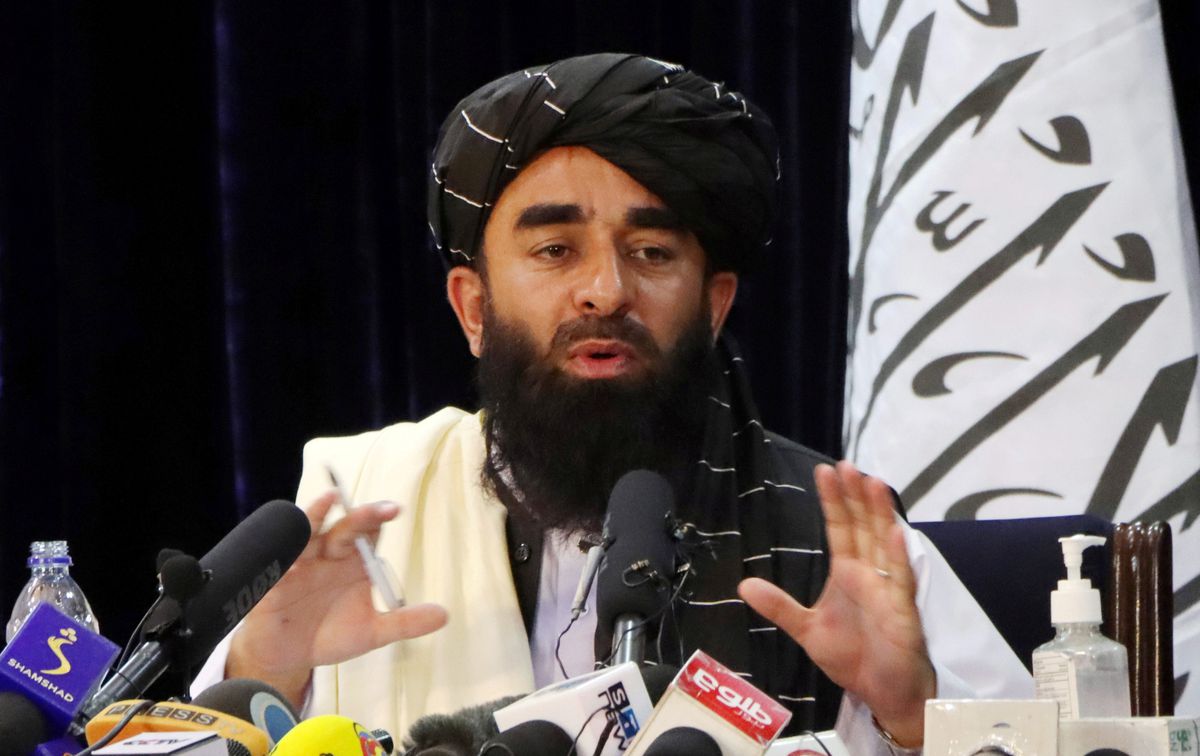Prior to his departure from office, President Trump announced the withdrawal of most U.S. troops by September 11, 2021, ending a twenty-year presence in Afghanistan. Once in office, Joe Biden accelerated that withdrawal timetable to the end of August. However, all troops, except for a contingent at the embassy, were flown out on July 5th during the night without informing their Afghan counterparts.
As of August 12, 2021, the U.S. Embassy began evacuating personnel amidst the rapidly deteriorating conditions and growing threat of Taliban encroachment on Kabul. Biden deployed 6,000 troops to assist with the evacuation. According to U.S. government sources, the Taliban had already closed off the roads surrounding the city, essentially laying siege to the inhabitants. By Sunday, August 15, the Taliban had seized control of Kabul; Afghan President Ashraf Ghandi and his Cabinet fled the country for Dubai. Widespread fear, panic and chaos erupted as people converged upon the airport desperate to leave the country. Some even clung to planes taking off and fell to their death. The evacuation plan was disrupted and later resumed, with the intent to get all Americans out as well as those Afghans who had worked with the U.S.

In preparation for the U.S. military withdrawal, Congress had expanded the number of Special Immigrant Visas (SIVs) from 10,000 to 18,000 available for Afghans who have worked with the US military. This number does include their family members who also need to be evacuated. They face the most danger as the Taliban knows who they are and are intent on retaliation by means of torture and even murder. Additionally, because 49 percent of SIV applicants were from outside of the Kabul area, these approximately 40,000 Afghans from rural areas may not make it through numerous Taliban checkpoints to extraction points. Some additional applicants will be transported to other countries awaiting SIV application processing. The U.S. government specifically asked Qatar and Kuwait to provide a temporary home to about 10,000 Afghans who worked with either U.S. or allied forces.
The current situation is very dangerous for those working with foreign NGOs as well. I met with a woman who served for eleven years as a nurse with a well-established NGO in Afghanistan. She is being inundated with frantic requests for help from Afghans with whom she worked; because the NGO was considered Western, they are also being targeted. She shared firsthand accounts of beheadings and shooting executions as well as abductions for ransom. She showed me a photo of a hostage for whose release the Taliban is demanding $100,000. In the photo, he had severe burns and other serious injuries from torture.
As the Taliban has aggressively taken control of the country, there is fear and panic among Afghans. Those with means have sought refuge in some European and neighboring countries. Most, however, lack the resources to flee the country and are left to face Taliban rule. According to Al Jazeera News, “At least 244,000 people have been internally displaced since the beginning of May, when the Taliban began multiple offensives against the Western-backed Afghan government.” A full flown humanitarian crisis has developed as people attempt to flee.

The international community has broadly decried the Taliban’s brazen and brutal takeover of Afghanistan. The UN Security Council has drafted a resolution condemning the Taliban. This resolution states “The Security Council condemns in the strongest terms possible the armed attacks by Taliban forces on cities and towns across Afghanistan, resulting in high numbers of civilian casualties.” The draft text also underlines the Council’s “readiness to impose additional measures on those responsible for violations or abuses of human rights or violations of international humanitarian law, including those involved in attacks targeting civilians, and individuals or entities engaging in, or providing support for, acts that threaten peace, stability or security.” The resolution has not yet been voted on by the 15-member council.
Earlier this year, the Open Door 2021 World Watch List ranked Afghanistan the second worst country for persecution, eclipsed only by North Korea. In addition to Christians, Shia Muslims and Hindus also have been severely discriminated against and subject to violence and persecution. In its 2021 report, the U.S. Commission on International Religious Freedom (USCIRF) recommended that the Department of State place Afghanistan on a Special Watch List. USCIRF also classified the Taliban as “an entity of particular concern.” Undoubtedly, these classifications will become more severe considering the Taliban takeover.
Under the Taliban, the situation for the few Afghan Christians will certainly deteriorate even more in the nation where 99.7 percent of the population are Muslim. Because the Afghan Church largely operates underground, estimates of Christians in Afghanistan range between 1,000 and 18,000. Despite suffering persecution under the repressive Islamic Republic, the Taliban, and clan oppression, Christianity in Afghanistan has been growing, exceeded only by Iran in growth. Christians must be secretive, even with their own families, risking of being disowned at best and killed at worst. Christian girls are being abducted to be “wives” of Taliban fighters. Recently, a pastor received a letter from the Taliban: “We know who you are, what you do and where to find you.”
As the crisis in Afghanistan continues to unfold, it is imperative that we earnestly pray for the safety and security of our Afghan brothers and sisters. As one Afghan pastor stated: “I don’t even have words to pray now.”
Source: persecution.org
